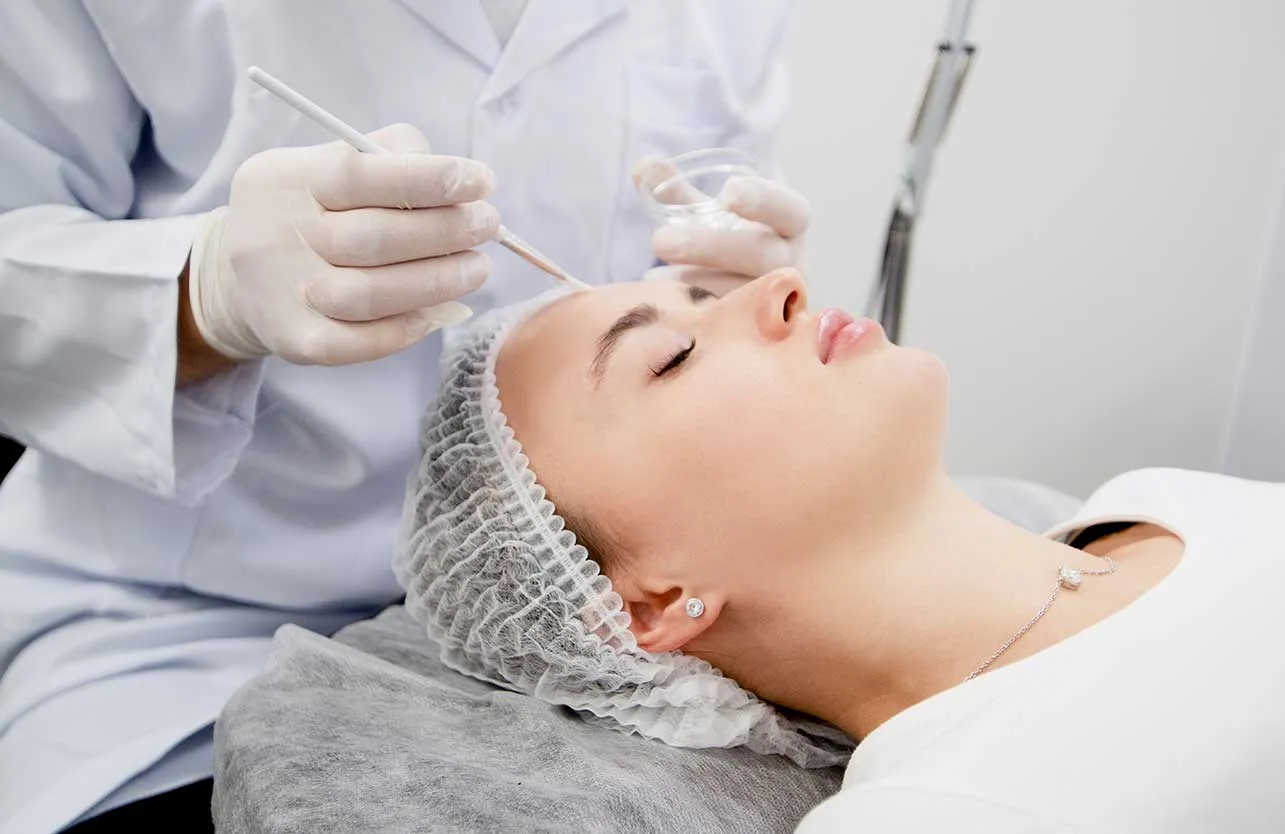Which Skin Types Are Suitable for Chemical Peels?
What Is a Chemical Peel?
A chemical peel is a controlled skin resurfacing treatment using acids like AHA (alpha-hydroxy acids), BHA (beta-hydroxy acids), or TCA (trichloroacetic acid) to exfoliate the skin.
Primary goals include:
- Removing dead skin cells
- Brightening uneven skin tone
- Minimizing acne marks and pigmentation
- Stimulating collagen renewal
- Enhancing texture and radiance
The right acid type and concentration must match your skin type for effective and safe results.
Best Chemical Peels by Skin Type
1. Oily and Acne-Prone Skin
Best suited acid: BHA (Salicylic Acid)
Why it works:
- Oil-soluble; penetrates clogged pores
- Unclogs blackheads and reduces inflammation
- Has antibacterial and keratolytic properties
Alternatives:
- Mandelic acid (for oily yet sensitive skin)
- Lactobionic acid (gentler option with anti-inflammatory action)
2. Dry and Dehydrated Skin
Best suited acid: Lactic Acid (AHA)
Why it works:
- Gently exfoliates while acting as a humectant
- Improves hydration and reduces flaky texture
- Softens fine lines
Alternatives:
- Glycolic acid at low concentrations (5–10%)
- PHA (gluconolactone) for very dry or mature skin
3. Sensitive or Rosacea-Prone Skin
Best suited acid: PHA (Polyhydroxy Acids)
Why it works:
- Larger molecular structure penetrates slowly
- Minimizes irritation and inflammation
- Contains antioxidant and moisturizing properties
Alternatives:
- Azelaic acid (especially for redness and rosacea)
- Mandelic acid at low concentrations
Avoid strong glycolic acid and high-strength TCA in sensitive skin.
4. Combination Skin
Best approach: AHA + BHA combination peels
Why it works:
- BHA targets oily T-zone
- AHA hydrates and exfoliates drier areas
- Provides balanced exfoliation
Usage Tip:
- Use combination peels with professional formulations
- Rotate acids on alternate days in home care routines
5. Normal Skin
Best suited acid: Glycolic Acid (AHA)
Why it works:
- Promotes cell turnover
- Improves overall tone and texture
- Reduces early signs of aging
Start with 10%, then gradually increase to 20% under professional guidance.
6. Hyperpigmented and Uneven Skin Tone
Best combinations:
- Glycolic acid + Kojic acid
- Azelaic acid + Vitamin C
- TCA peels for deeper pigmentation (clinic use only)
Why it works:
- Inhibits melanin synthesis
- Reduces sunspots, post-inflammatory pigmentation, and dullness
- Improves clarity and brightness
Chemical Peel Depths and Their Effects
|
Depth |
Target Concerns |
Acid Types |
Duration |
|
Superficial |
Dullness, rough texture |
AHA, BHA, PHA |
5–10 mins |
|
Medium |
Pigmentation, fine lines |
TCA (10–20%) |
10–20 mins |
|
Deep |
Deep wrinkles, acne scars |
High-strength TCA or phenol |
30+ mins – performed only by professionals |
Pre- and Post-Treatment Care for Safe Results
Before the Peel:
- Stop retinoids and exfoliating acids 3–5 days prior
- Avoid peeling if skin is irritated or broken
- Minimize sun exposure before treatment
After the Peel:
- Expect mild redness and peeling
- Use broad-spectrum SPF 50+ every day
- Apply calming moisturizers and avoid harsh actives
- Avoid makeup for 48 hours post-procedure

